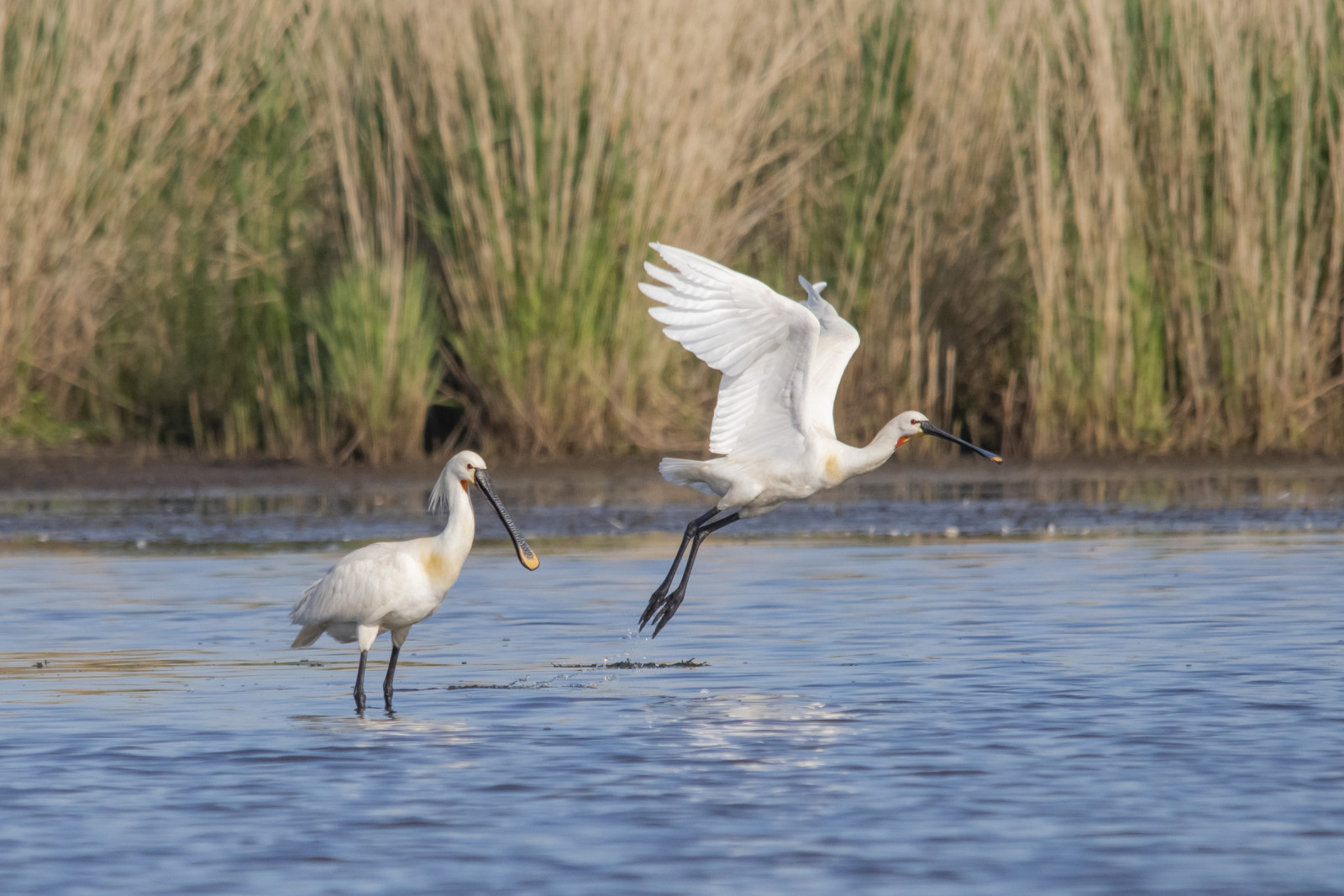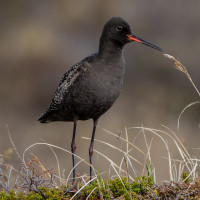Description
There was once 107 hectares of agricultural land near Zevenhoven and the Nieuwkoopse Plassen. Those 107 hectares are still there, but the agricultural land has been transformed into a magnificent nature reserve named the Groene Jonker. A pond, reed fringes and grasslands were created, creating a bird paradise that attracts birdwatchers from far and wide. They are attracted to the many swamp and meadow birds that live there.
Which bird species you see there, depends on the season. črnovrati ponirek, črna čigra, črnorepi kljunač, grahasta tukalica and pritlikava tukalica gave the area its fame. In spring you can see and hear srpična trstnica, modra taščica trstni strnad, bičja trstnica and Mokož in the reed collars. The rjavi lunj dances above the reed collars and žličarka and velika bela čaplja forage in the shallow water areas. You can also see waders such as črnorepi kljunač, rdečenogi martinec, močvirski martinec and pikasti martinec. It is one of the best places in The Netherlands to see polojnik. In winter you can see large groups of togotnik, priba, veliki škurh and škorec, not to mention the thousands and thousands of žvižgavka that hibernate there. Other ducks you can see are žličarica and dolgorepa raca. The pepelasti lunj also hunts in the area, as do sokol selec and skobec.
_________________________
Nederlands: In de Groene Jonker zijn het hele jaar door veel vogels te zien. In het voorjaar zie je žličarka, modra taščica en priba en soms zeldzaamheden. Het is een van de beste plekken in Nederland om polojnik te zien. Bij Zevenhoven en de Nieuwkoopse Plassen lag ooit 107 hectare landbouwgrond. Die 107 hectare zijn er nog, maar de landbouwgrond is getransformeerd tot een prachtig natuurgebied genaamd de Groene Jonker. Er zijn een vijver, rietkragen en graslanden, waardoor een vogelparadijs is ontstaan dat vogelaars van heinde en verre trekt vanwege de vele moeras- en weidevogels die er leven.
Welke vogelsoorten je er ziet, hangt af van het seizoen. črnovrati ponirek, črna čigra, črnorepi kljunač, grahasta tukalica en pritlikava tukalica gaven het gebied zijn bekendheid. In het voorjaar kun je srpična trstnica, modra taščica trstni strnad, bičja trstnica en Mokož in de rietkragen zien en horen. De rjavi lunj danst boven de rietkragen en žličarka en velika bela čaplja foerageren in de ondiepe watergebieden. Je kunt ook steltlopers zien zoals črnorepi kljunač, rdečenogi martinec, močvirski martinec en pikasti martinec. In de winter zie je grote groepen togotnik, priba, veliki škurh en škorec en niet te vergeten de duizenden en duizenden žvižgavka die er overwinteren. Andere eenden die je kunt zien zijn žličarica en dolgorepa raca. De pepelasti lunj jaagt ook in het gebied, net als sokol selec en skobec.
Details
Access
You can park here for free: parkingplace de Roerdomp, Hogedijk 2-10, 2435 NC Zevenhoven (ZH). See the P in the map.
_________________________
Nederlands: Je kunt hier gratis parkeren: parkeerplaats de Roerdomp, Hogedijk 2-10, 2435 NC Zevenhoven (ZH). Klik op de P in de kaart voor een routebeschrijving.




